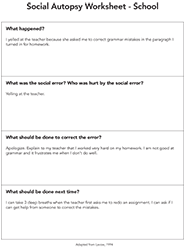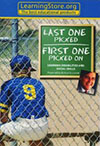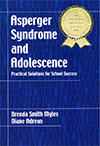Autism Center Grab and Go Resource Gallery of Interventions
Social Autopsy
Consider developing and implementing a social autopsy. Social autopsies were developed by Richard Lavoie. The goal of the social autopsy is twofold: (a) to help the individual better understand a social situation, and (b) to assist the individual in responding more effectively when similar situations are encountered. The social autopsy helps individuals understand social errors committed during social interactions and promotes choosing alternative solutions to correct those errors in the future. Steps are provided that include: (a) identifying the error, (b) determining who was harmed by the error, (c) deciding how to correct the error, and (d) developing a plan so the error doesn't happen again. Using graphics to support comprehension can also enhance a social autopsy.
For further information, visit the Social Narratives Autism Internet Module at www.autisminternetmodules.org
Examples

Social Autopsy Resource
Videos
The Social Autopsy
This video shows how to use the social autopsy worksheet with an individual with autism.
Special Education - social autopsy
This video shows how to use the social autopsy worksheet- role playing
Book Suggestions

Last One Picked... First One Picked On: Learning Disabilities and Social Skills
Lavoie, R. D.
For most children, playing with friends is a daily ritual. But kids with learning disabilities are often isolated and rejects, lacking the social skills to make and keep friends. Richard Lavoie shows how to help these kids succeed in every-day situations. LAST ONE PICKED... FIRST ONE PICKED ON gives parents and teachers greater understanding of social skill deficits and specific strategies for developing skills and fostering social competence. Running time: 62 minutes.

Asperger Syndrome and Adolescence: Practical Solutions for School Success
Myles, B. S., & Adreon, D.
The middle school years pose challenges for all young people. In this comprehensive and thorough book, the authors start with an overview of those characteristics of AS that make adolescence particularly challenging and difficult. Central to the book is a detailed discussion of strategies and supports necessary to ensure a successful school experience for students with AS at the middle and secondary levels.
What sets this book apart is the way it ties all the recommended strategies together in a real-life case study of Michael, a youth with AS. This touch of real life continues in the closing chapter, which consists of statements by parents and adolescents with Asperger Syndrome about the transition years. This book is critical reading for everybody who lives or works with an adolescent with Asperger Syndrome.